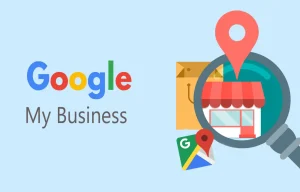Is branding really important for a business? Should a startup or a small business take branding seriously?
The simple answer is ABSOLUTELY!
We have encountered that many startups and small businesses neglect to invest the necessary time in considering their brand identity in a broad sense and the effects it has on their business.
Through branding, a product or service can develop an identity that distinguishes it from its competitors and creates a bond with its customers with the help of creativity, skill, and strategy.
But branding is just more than that. To stand out from your competitors, you need to go deep and include essential elements that define your business clearly and comprehensively. This includes your logo, website, social media presence, brand voice, phone etiquette, and how customers interact with your personnel.
In this article, we will tackle what branding is and why branding your business is very important. Make sure you have your pen and paper ready, as there are some essential takeaways.
First of all, what is a brand?
A feature or group of features that set one company apart from another is known as a brand.
Typically, a brand is often expressed in the form of a logo or a symbol, tagline, design, brand voice, colours, and other elements. It also describes the total encounter a consumer has with your business, whether they are a shopper, a client, a follower on social media, or just a casual customer.
The likelihood of potential customers perceiving your brand as the best option depends on how powerful and reliable your brand is.
What is branding?
The process of analysing, creating, and implementing a distinctive feature or collection of features for your business is known as branding.
A good brand doesn’t just happen overnight; it is the result of a carefully considered and planned brand strategy. So you must know where your current brand experience is and have a plan to create the brand experience that you want.
By building and defining a brand in consumers’ perceptions, branding is the procedure of imparting meaning to your organisation, company, product, or service. By defining what this specific brand is and is not, businesses can help people immediately recognise and experience their brand, and offer them a reason to prefer their products over competitors.
Is marketing and branding different?
Yes!
The collection of techniques, procedures, and tactics you use to actively market your business, its goods, and services is known as marketing. Consider marketing as the steps you take to engage with clients and persuade them to purchase your goods or services.
On the other hand, branding is the marketing practice of actively shaping your brand and defining who you are as a company. It’s your mission, your values, and what makes you special and unique that consumers are drawn to your product over competition.
Important key points to remember:
- While branding helps to hold a customer’s attention, marketing draws it in.
- Marketing increases sales, whereas branding increases loyalty and awareness.
- Branding comes first, followed by marketing.
- While marketing tactics change, branding remains constant.
The importance of branding for businesses of all sizes
Given how competitive the market is today, it’s unfortunate that many startups and small business owners don’t have a brand strategy. The main reason is they think that branding is only for medium to big companies with big budgets and international consumers, such as Coca-Cola, Apple, or Nike. You may have a brilliant product or service, but neglecting to clearly define your business brand is marketplace suicide. Branding is just as important for start-ups and small businesses, as this is one of your organization’s most important assets.
Businesses that utilize brand building have a clear advantage over those that don’t.
Other reasons branding is important for all businesses
Source (https://forestfest.ie/)
Separate your business from competitors
With a lot of companies offering the same services as yours, standing out can be challenging. That’s where branding comes in.
To stand out from the competition, you must distinguish yourself from other companies.
Make sure that your company’s distinctive principles, advantages, and attributes serve as the foundation and inspiration for your brand. Being authentic goes hand in hand with this, and it’s the only way to build a distinctive, recognisable brand.
Customer Recognition
Another benefit of making consistent branding efforts is increased brand recognition.
When consumers decide what to buy, branding is one of the deciding factors. If customers can identify your company based on physical, visual, and auditory elements, it breeds familiarity. When familiarity is established, it fosters trust which customers rely on to make buying decisions, thus choosing your product instead of your competitors.
Customer Loyalty
Your customers are your best allies when it comes to establishing your brand. A good product branding will breed customer loyalty, and those customers will continue to support you through good or bad, and share their positive experiences with you. This can result in increased word-of-mouth recommendations, repeat business, and less churn.
How to create a brand identity for your business?
#1 Determine your target audience
The first step in branding your business is to understand who your potential customers are. There are a few steps to this process:
1. Analyse your current customer base
Your existing customers are a goldmine of information, as they know what is impressive or where you’re lacking in your brand. Conduct surveys on social media channels, in-person or online forums, such as Quora. Contact them through calls or study them to find answers are just a few of my suggestions. Chances are you will find common ground or even patterns that’ll help you define your target audience and improve your branding.
2. Conduct Market Research
You can learn about market trends, opportunities, customer preferences, purchasing patterns, and conversations about your brand or others’ brands by conducting market research. Additionally, it’s a good method to learn more about your rivals. Take note of their clientele, favourite channels, areas of interest, etc. The best areas to start your research are relevant social media platforms, review websites, industry forums, or Q&A websites like Reddit.
3. Create buyer personas
A buyer persona is a fictional depiction of your target audience or ideal customer. It’s a lot simpler to create a successful, focused scope that speaks to your potential buyer’s goals and concerns when you have a clear understanding of who you’re marketing to.
Buyer personas help ensure that all activities involved in acquiring and serving your customers are tailored to the targeted buyer’s needs. Once you analysed your current customers and conducted your market research, you need to group your customers based on patterns or common traits you uncover, and represent them with a persona. Include demographic, geographic, and behavioural details to better understand them.
#2 Determine your mission and core values
Ask yourself again.
“Why did I start my business?”
Your mission and vision statement, which outlines your organization’s purpose and passion, will be built with the assistance of your response to that question.
To write a powerful mission statement, you must be able to articulate the benefit that your business offers before you can create a brand that your audience recognises, values, and trusts. Then, that mission and vision may be reflected in every aspect of your brand, including your logo, tagline, images used on your website and ads, voice, and personality.
Refrain from using generic words that do not define what your business stands for as this will only lead to a conflicting brand image. Instead, be specific, use your own words, and ensure that your entire organization embodies these principles.
#3 Define your brand personality
Source (https://thelogocompany.net/psychology-of-color-in-logo-design/)
Like an individual’s personality, your brand personality is a concoction of the traits that your company displays. These qualities ought to draw clients to your business and influence how they see it. Therefore, having a personality that connects with your audience could help you establish an emotional connection and differentiate yourself from your competitors.
Think about the attributes you want people to associate with your brand. Do you want to come across as charismatic, competent, or visionary? Choose your personality attributes and the voice you want to use carefully, as that is an important step in creating your branding assets.
#4 Create your branding assets
After deciding on your brand personality, the next step is to build your brand assets. Some examples are logo, slogan, colours, and fonts. You need to keep in mind that certain colours evoke specific emotions and convey meanings.
For example, as Red evokes a sense of urgency, excitement, and passion. It is often used on fast food chains and clearance sales. Try checking out your favourite fast food chain and see if they have something red used in their logos 😉.
Yellow inspires hope, optimism, and warmth. But it can also cause customers to become impulsive due to their fear.
Green symbolises peace, nature and good health. It promotes harmony and a close bond with environmental friendliness.
The colour blue is linked to tranquillity, dependability, and harmony. This colour frequently promotes productivity and a feeling of security. Brands that want to establish confidence and dependability in their goods or services frequently utilise the colour blue.
Purple is a symbol of respect, luxury, and wisdom. It frequently sparks innovation and improves problem-solving.
Black symbolises security, authority, and strength.
White is a colour that denotes simplicity, cleanliness, and purity.
Whichever logo, colour scheme, and style you choose to brand your business, make sure that it is easily recognizable and remembered.
Consult with branding experts like Digimark.ie to get some ideas and guidance through the branding process.
#5 Integrate your branding across your channels
Now that your logo, slogan, and other branding elements are ready, distribute them across all your channels.
Website
Make sure your brand guidelines are implemented on your website.
- The logo is present
- Typography, colours, and icons are consistent across web pages
- Images used should reflect the mission and vision of the brand
- The contents should reflect the brand voice
Everything on your website should be consistent, should reflect your brand, and scream your brand voice, because if not, it will only provide a puzzling customer experience.
Social Media
Make sure all profile photos, cover photos, and images used on your social media posts reflect your brand. It’s advisable to have your logo as your profile photo, so customers can easily recognize your business at first glance.
Also, make sure all your information (Name, Address, Contact Information, Location) is up to date and the same on all your social media channels, as this is important if anyone wants to contact you.
Sales and Customer Service
A brand is only as strong as the people behind it, therefore if your team isn’t working to make your brand effective, it won’t work for you.
Additionally, your brand extends beyond your marketing. Give your sales and customer service staff a copy of your brand rules and instruct them to follow them, especially when dealing with customers directly. Encourage them to incorporate your logo, tagline, images, and brand voice whenever possible, whether they are delivering a demo of a branded product or responding to customer support requests.
Set your branding now
Your company’s name, logo, colour scheme, voice, and imagery all contribute to your branding.
But there’s more, it’s that elusive feeling that buyers encounter while interacting with your brand.
Big brands with the likes of Coca Cola and Apple differ from the rest in this way. Beautiful logos, creative taglines, real manifestos, and distinct brand voices are tangible elements that help, but powerful brands succeed when they concentrate on the big picture of their business.
A successful brand will only emerge if you understand your target market and your company deeply.
Hope this article helps you understand why branding your product and business is very important. If you want professional help in setting up branding for your website, we are always happy to help you.











